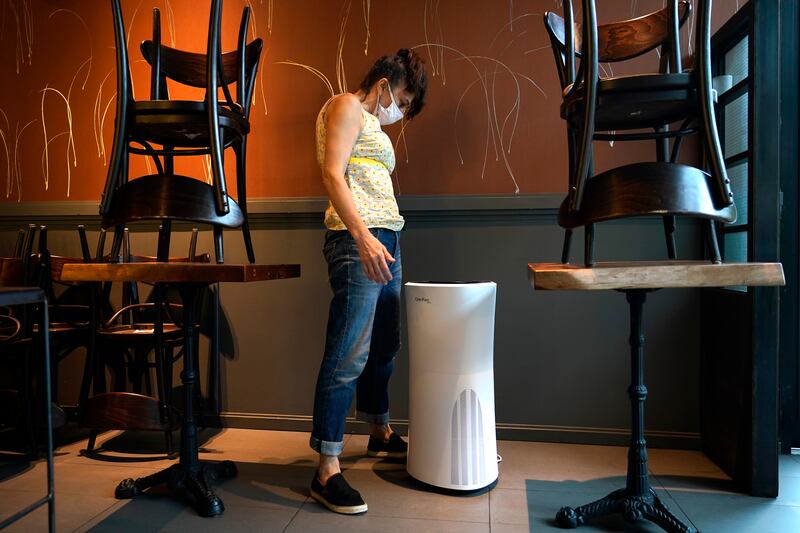Social distancing seems much easier when it’s warm and beautiful outside. People can get together as they stay 6 feet apart in the mountains, at the lake or even in a big backyard. But now that temperatures are turning colder and we all head inside, social gatherings become problematic.
The Centers for Disease Control and Prevention tell us COVID-19 spreads through respiratory droplets produced when someone coughs, sneezes, sings, talks or even breathes. And growing evidence shows those airborne particles can hang out in the air, waiting for someone else to breathe them in. But good ventilation and air cleaners for your home can help.
Getting clean air circulating through your home during warm months is as easy as opening up a window or two and turning on a fan. But soon most of us won’t want to do that, since the air outside will be frigid.
The Environmental Protection Agency says using a portable air cleaner or upgrading the air filter in your HVAC system can “reduce indoor air pollution,” but specified that air purifiers “cannot remove all pollutants from the air.”
When choosing an air purifier, make sure it has a high-efficiency particulate air (HEPA) filter. They are certified to capture 99.97% of particles that measure .3 microns. It traps anything larger or smaller with even higher efficiency. Traditionally, droplets are defined as larger than 5 microns, so a HEPA filter would easily capture them.
You’ll also want to ensure the air purifier is powerful enough to clean the room where you’ll use it. Look for the clean air delivery rate (CADR) which shows how well the filter performs and how much air passes through it. You want a lot of air going through that filter as quickly as possible. A 500-square-foot room with an 8-foot ceiling, for example, would need a device with a minimum CADR of 325.

You can find CADR calculators online to help you figure it out. The rate at which clean air replaces polluted air is called the air exchange rate. While the EPA reports a typical home may have an exchange rate of .35 per hour, your goal should be an air purifier that has 5 air changes per hour.
Furnace and HVAC systems also have filters that can clean air when in use. But the EPA reports that heating or cooling is usually only needed less than 25% of the time. You can still choose to upgrade to a higher efficiency filter to help eliminate those pollutants, even if it is only 25% of the time. The EPA recommends choosing a filter with at least at minimum efficiency reporting value of 13. You may need to check with an HVAC professional to figure out which filter is best for your system.
Hosting any type of indoor gathering right now is risky. Just today, my county shifted to a high risk level on our state’s COVID-19 transmission index. That means only social gatherings of 10 or fewer are permitted.
If you are set on getting friends and family together indoors right now, make sure you know how many guests are permitted according to local regulations.
Don’t be afraid to take back an invitation from any guest who has been exposed to COVID-19 in the last 14 days or who might be showing symptoms.
If you’re using an air purifier, put it in the center of the room and turn it up to the highest level. It may be bit noisy, but it will help keep the air cleaner.
Remember, only members of the same household should be closer than 6 feet unless wearing a mask. So spread out tables of food and seating and have plenty of hand sanitizer at the ready.
The CDC recommends keeping gatherings short and avoiding singing and hugs.
I know — total killjoy.
But with more than 8 million COVID-19 cases and 200,000 deaths in the U.S. alone, we all need to do our part to stop the spread. Whether that involves buying an air purifier, or holding back when you want a grand chorus of “Sweet Caroline” is up to you.


